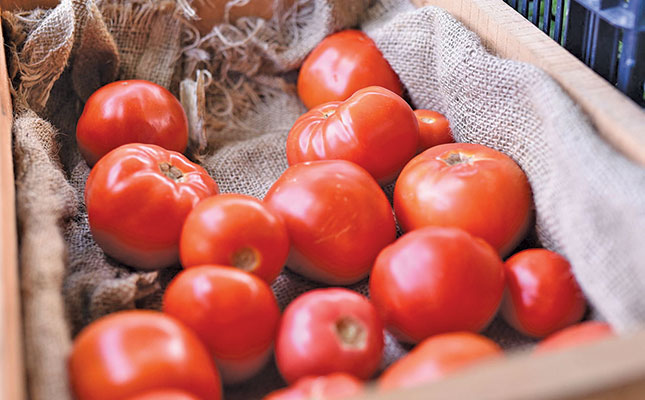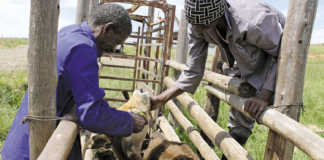
Photo: Karl Thomas Moore
To reduce the risk of disease, tomatoes should be planted as part of a three- or even four-year rotation. Avoid crops such as potato, chilli and sweet pepper in the rotation, as they are hosts to a number of important tomato diseases and pests.
To futher lessen the chances of disease or pest problems, ensure that the seedbed is isolated from existing tomato lands and is exposed to free-flowing air (not strong wind, however).
READ A high-yield indoor farming system ideal for the city
The site should be in full sunlight, and the soil should ideally be well-drained, sandy loam. Prepare it well, ensuring that it is relatively loose. Fertilise it, adding lime if required. Fumigation, too, may be necessary to control nematodes and weeds.
Make the beds about 1m wide and 150mm higher than the pathways between them to enable water to run off properly. The beds should be level across their width, with no high spots (too dry) or low spots (too wet).
Sow the seed thinly, in shallow furrows drawn 100mm to 150mm apart, and covered to a depth of between 10mm and 15mm.
Irrigate lightly and frequently to prevent the surface of the soil from drying out. About 250g of seed, sown on 100m² to 150m² should provide enough plants, when transplanted, for 1ha.
READ Microgreens: a tiny crop with big returns
Reduce watering over the final 10 days to harden the seedlings (do not allow the plants to wilt severely, however).
Give the beds a good soaking a day or two before transplanting to ensure that the plants can be removed from the soil with minimal root damage.
Short, sturdy, slightly hardened seedlings, between 100mm and 150mm tall, perform better than soft, lanky seedlings. To avoid the latter, do not sow the seedlings too densely, overuse nitrogen-based fertiliser, or overwater them.
Under warm conditions, tomato seedlings may take about 30 days to reach the transplanting stage; under colder conditions, they may take 60 days or more.
READ Value-adding boosts hydroponics venture
Transplant only those seedlings that have reached the desired size. Those developing more slowly can be transplanted slightly later, when they are more developed, but they are less likely to perform well. Discard any weak, diseased or abnormal plants.
Lift the plants carefully, avoiding damage to the roots, and cover them with moist sacks until transplanting.
When ready, plant them into moist soil. Set the plants slightly deeper than in the seedbed, firm the soil around the roots, and irrigate as soon as possible after transplanting.
Different plant spacing
- Processing tomatoes: These plants are seldom trellised, and the row widths are determined by the straddle of the tractor and spray-rig, as well as the vigour and vine length of the cultivar used. To prevent trampling during spraying and harvesting, ensure that plant growth is confined to the tops of the bed, and does not spill over into the path of the machinery. A plant spacing of 300mm to 500mm in rows 1,2m apart will provide a population of between 16 000 and 28 000 plants/ha.
- Table tomatoes: These plants are usually trellised, and the rows are generally spaced between 1,4m and 2m (or even 3m) apart. Intra-row spacing varies between 300mm and 500mm.
Seedling production
The quantity of seed required varies according to where the seedlings are propagated. For 1ha of tomato plants:
- Sow between 100g and 200g of seed if using seed trays;
- Sow 250g of seed if using seedbeds;
- Sow up to about 2kg if sown directly on the land.
In practice, tomato plants are seldom direct-seeded; they are either grown in seedbeds or, more commonly, in seed trays (especially when using expensive hybrid seed). Seedlings will emerge within six to nine days after sowing at a suitable temperature (between 20°C and 35°C).
Sowing times:
- Cold areas (heavy frost): September to November;
- Warm areas (light frost): August to December;
- Hot areas (no frost): December to March; July to September.
Source: Retrieved from www.kzndard.gov.za











